Recovering from the stomach flu can be a physically and emotionally draining experience. Known medically as viral gastroenteritis, this illness can result in intense nausea, vomiting, diarrhea, abdominal cramping, and fatigue. During recovery, dietary choices become critical not only to regain strength but to support gut healing and overall resilience. Understanding what to eat when you have the stomach flu plays a vital role in both easing symptoms and preventing complications like dehydration and nutrient depletion. This guide offers a comprehensive, evidence-based approach to navigating the delicate process of eating through and after a stomach virus, using a blend of conventional wisdom, clinical nutrition, and holistic health strategies.
You may also like: The Ultimate Guide to Gut Healthy Meals: Best Meals for Gut Health and Nourishing Recipes You’ll Love
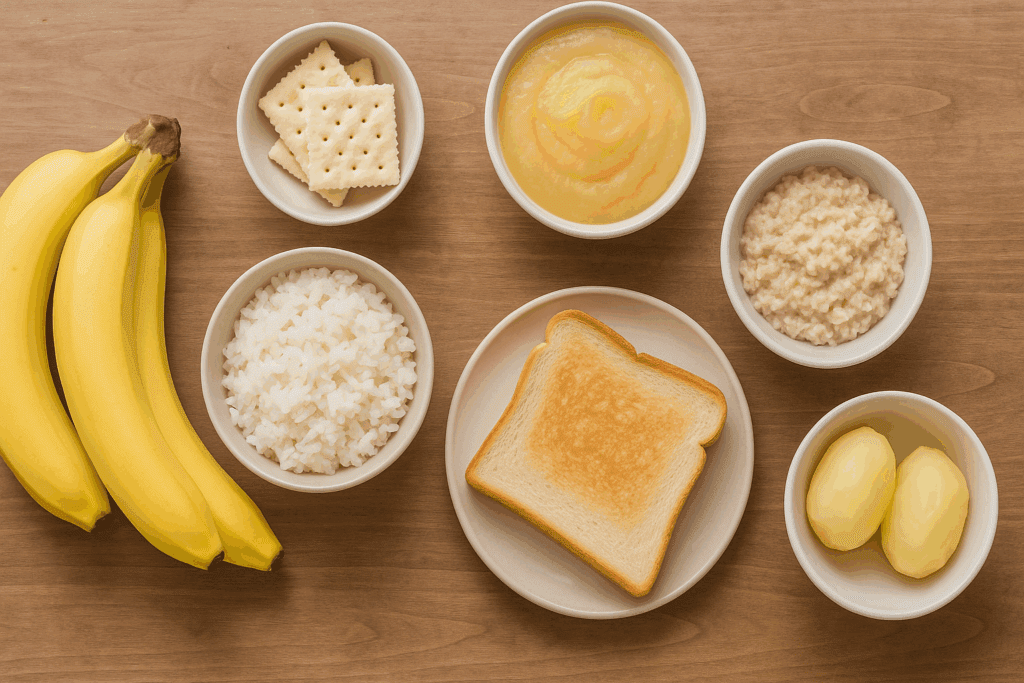
Why Nutrition Matters During and After the Stomach Flu
When a stomach bug strikes, the digestive system becomes inflamed and overly sensitive. This inflammation can impair the body’s ability to digest, absorb, and utilize nutrients. For this reason, the gastroenteritis diet should prioritize simplicity, digestibility, and hydration above all. By carefully selecting foods to eat with stomach flu, you reduce the risk of further irritation and create an environment conducive to recovery. Nutritional choices at this time must balance the need for rest with the need for gentle nourishment.
In addition to supporting physical healing, nutrition also plays an immune-modulatory role. Certain foods can help reduce inflammation, stabilize blood sugar, and replenish electrolytes lost through vomiting and diarrhea. Knowing what to eat with tummy bug symptoms enables individuals to shorten the duration of illness, strengthen gut flora, and avoid re-injury to the digestive tract. A smart diet can ultimately transform a painful illness into a manageable one.
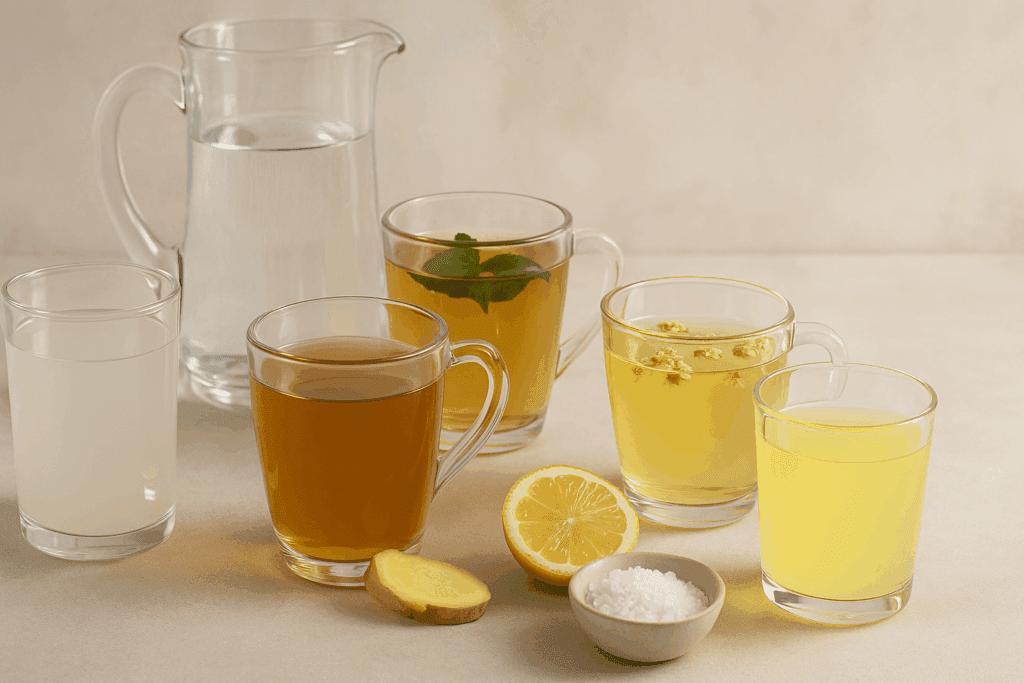
What to Eat When You Have the Stomach Flu: The BRAT Diet and Beyond
Many people are familiar with the BRAT diet—bananas, rice, applesauce, and toast—as a go-to option for easing digestive distress. These foods are bland, low in fiber, and unlikely to provoke nausea or diarrhea, which makes them ideal for the initial stages of stomach flu recovery. Still, modern gastroenterology has expanded upon this approach, suggesting additional foods to eat when you have a stomach virus that offer better nutrition while maintaining digestibility.
Boiled potatoes without skins, plain oatmeal, saltine crackers, and diluted fruit juices can also be included in a gentle recovery plan. Rice congee, a staple in Asian cuisine, is another excellent option for what to eat when you have a stomach bug, offering hydration, glucose, and easy digestibility. Once vomiting subsides and appetite returns, introducing small portions of steamed carrots, peeled cucumbers, or clear chicken broth may provide both hydration and vitamins in a well-tolerated form.
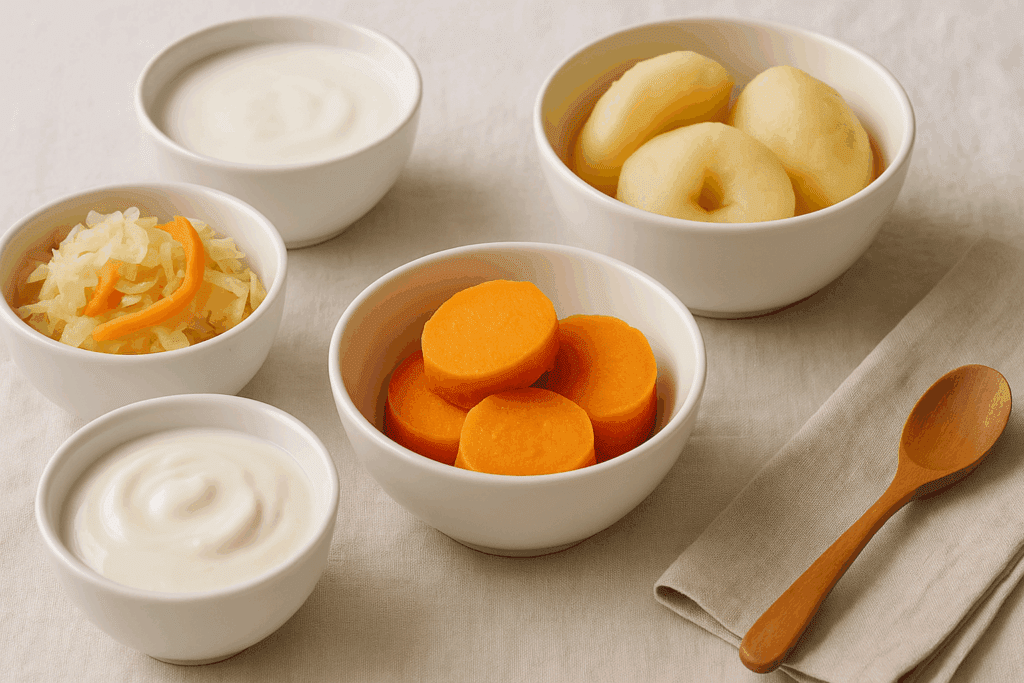
Hydration as a Healing Strategy: What to Drink to Kill Stomach Bug Effects
While no beverage can literally “kill” a stomach virus, strategic hydration can significantly weaken its hold on the body. Water is essential, but when vomiting or diarrhea is persistent, water alone may not be sufficient. Electrolyte-replenishing drinks such as oral rehydration solutions, coconut water, or diluted sports drinks help replace lost sodium, potassium, and chloride. These are critical to regulating nerve function, muscle contractions, and fluid balance.
Herbal teas can also provide gentle support during illness. Ginger tea, in particular, has been studied for its anti-nausea and anti-inflammatory effects. Peppermint and chamomile teas can soothe gastrointestinal spasms and offer a calming effect. While some ask what to drink to kill stomach bug symptoms, the goal is really to neutralize inflammation and support hydration—a goal best achieved through steady fluid intake over time.
Best Food for Stomach Flu Recovery: Building Back Digestive Resilience
As symptoms recede, the focus shifts from mere symptom management to rebuilding intestinal strength. Probiotic-rich foods such as plain yogurt, kefir, and fermented vegetables introduce beneficial bacteria that help rebalance the gut microbiome after illness. Including small amounts of these can gently reintroduce diversity to the digestive tract.
Soluble fiber sources such as oats, cooked apples, and peeled sweet potatoes help restore bulk to stool without irritating the gut lining. These should be introduced gradually to avoid sudden bloating or discomfort. Healthy fats, such as those from avocados or small amounts of olive oil, can also play a role in supporting gut lining repair and hormone balance. When deciding what to eat after gastro bug recovery begins, it is important to focus on foods that nourish rather than challenge the digestive system.
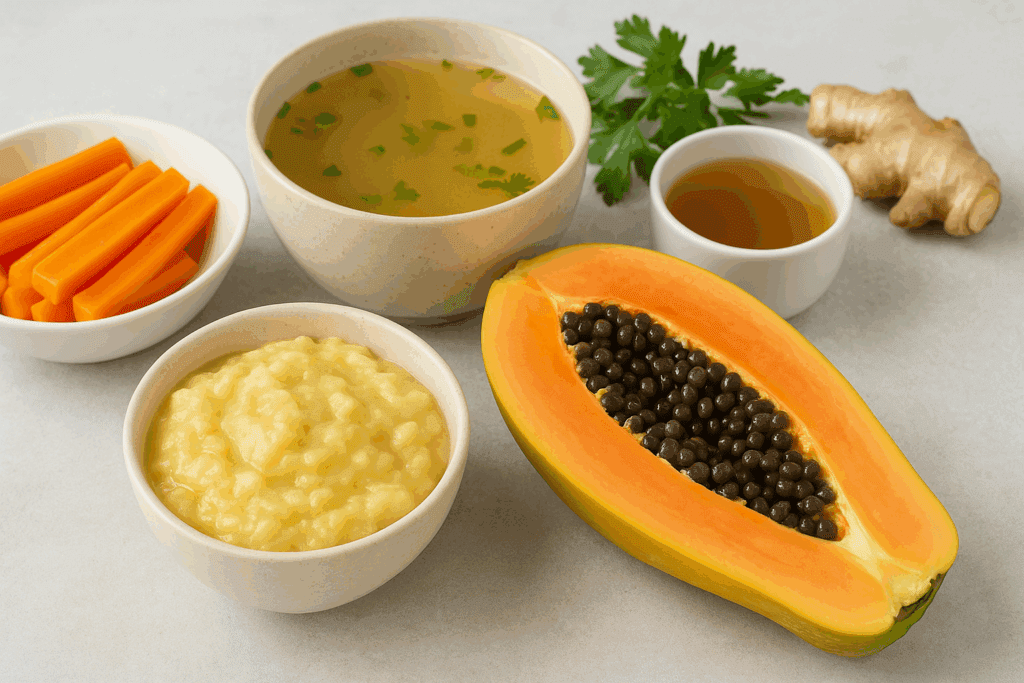
Is Chicken Bad for Stomach Bug Symptoms When Taking Medication?
This is a commonly asked question during stomach flu recovery. Chicken, when prepared plainly (e.g., poached or boiled), can actually be a helpful source of protein and zinc, both of which are vital for tissue repair and immune response. However, when taking certain medications, such as antibiotics or antiemetics, individuals may experience altered digestion or sensitivities that make heavy or fatty foods less tolerable.
If medication is causing additional nausea, it may be best to delay reintroducing animal proteins until bland carbohydrates are well tolerated. In contrast, if digestion seems stable, adding plain chicken to rice or broth can offer nutritional depth without overwhelming the stomach. In the context of what to eat when you have the stomach virus, chicken can be beneficial when introduced mindfully.

Gastric Flu Food to Eat That Supports Immune Health
The gastrointestinal system is home to over 70% of the body’s immune cells. That means the foods you eat during and after the stomach flu have a profound effect on immune health. Antioxidant-rich fruits such as bananas, blueberries, and papayas (peeled and mashed for digestibility) can reduce inflammation and oxidative stress. Light vegetable broths made with carrots, celery, and parsley also supply anti-inflammatory phytonutrients and essential trace minerals.
Bone broth has gained popularity in recent years for its gut-healing benefits. Rich in collagen, glycine, and minerals, it may help repair the intestinal lining and reduce post-infection fatigue. When choosing food for stomach flu recovery, prioritizing immune-supportive nutrients can lead to more resilient health long after the illness resolves.
What to Eat With Stomach Virus Diarrhea: Soothing the Digestive Tract
Diarrhea is one of the most debilitating symptoms of the stomach flu. During this phase, the digestive lining is especially sensitive and easily irritated. Foods to eat with stomach virus diarrhea should be low in fiber, non-spicy, and free of artificial additives. White rice, plain toast, and applesauce remain classic choices, but cooked carrots, mashed bananas, and gelatin can also offer a soothing effect.
Electrolyte balance is also crucial at this stage. Sodium-rich broths, potassium-rich mashed potatoes, and magnesium-containing avocados (when tolerated) can replenish lost minerals. It’s important to avoid dairy, caffeine, and high-fat meals until full digestive regularity returns. By choosing stomach bug food to eat that aligns with the body’s natural healing rhythms, recovery becomes not only faster but more comfortable.
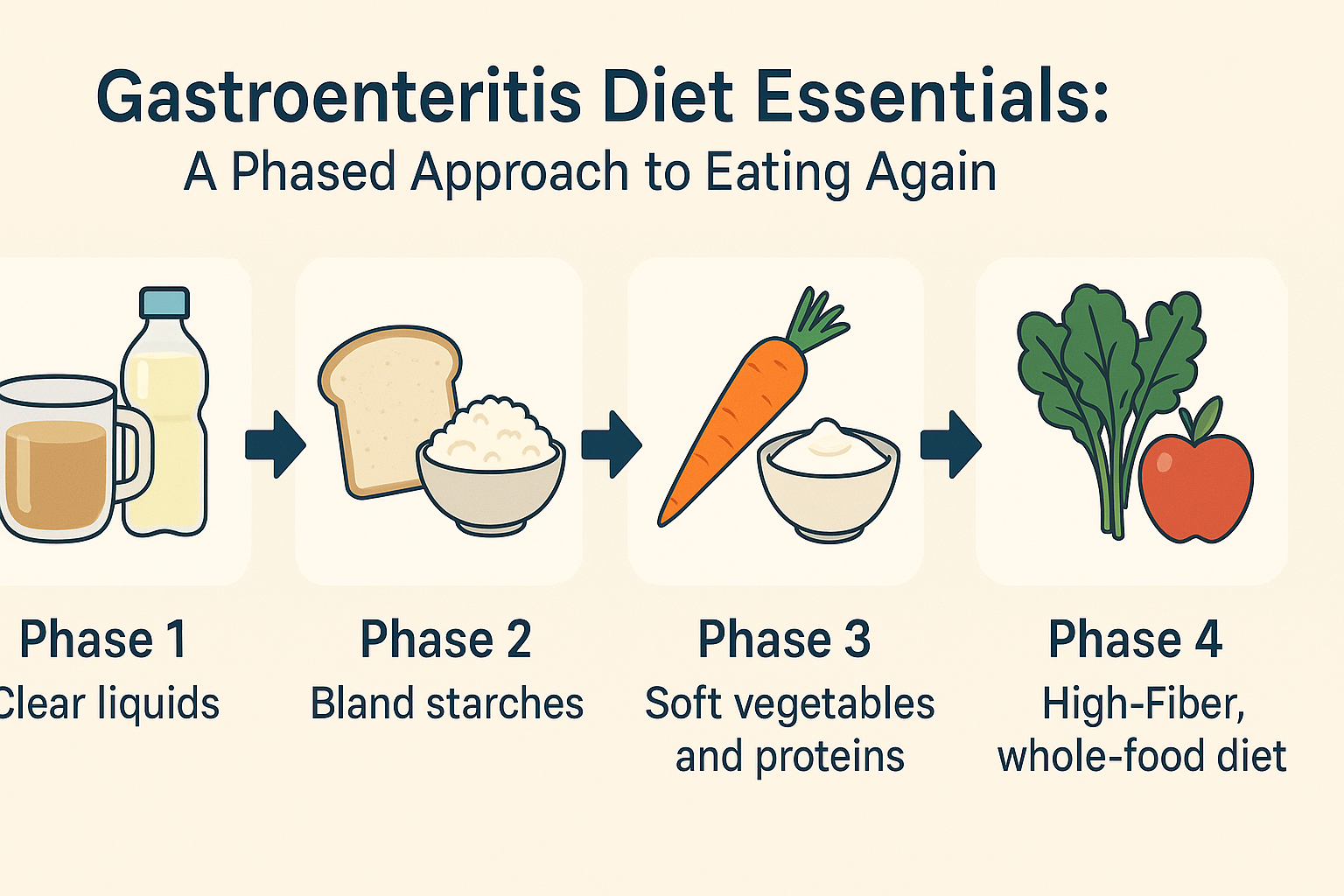
Foods to Eat After Tummy Bug Recovery Begins: Restoring Strength Safely
Once the acute phase of illness passes, a gradual return to more robust meals is possible. Soft-cooked grains such as quinoa or millet, steamed greens like spinach, and gently roasted root vegetables can ease the body into a more nutrient-rich, high-fiber diet. Lean proteins such as turkey or tofu can help rebuild muscle mass lost during illness.
This stage is also ideal for reintroducing prebiotic foods like garlic, onions, and asparagus—in small, cooked portions. These nourish the beneficial bacteria that probiotics introduced earlier. When exploring foods to eat after tummy bug recovery, think in terms of supporting not just digestion but systemic vitality. Avoiding processed foods and added sugars is particularly important, as these can inflame the gut and delay healing.
What to Eat When You Have a Stomach Bug: Gentle but Nourishing Options
When your appetite is limited but your body needs nourishment, the key is finding foods that are light yet nutritionally supportive. Steamed zucchini, mashed butternut squash, and broth-based soups with rice or lentils can fit the bill. Herbal remedies for stomach bug symptoms such as fennel tea or licorice root decoctions may also calm the stomach and reduce spasms.
What you eat in these early stages can significantly influence how soon you recover and how strong your digestion is afterward. Avoid raw vegetables, acidic fruits, and dairy until you are certain your gut can handle them. What to eat when you have a stomach bug should be a balance of comfort and strategy, blending wisdom and science in every bite.
Holistic Home Remedies for Stomach Bug Relief
In addition to nutrition, home remedies can offer powerful adjunct support. Aromatherapy with peppermint or lavender oil can calm nausea and anxiety. Acupressure at the P6 point (three finger-widths below the wrist) has shown efficacy in reducing vomiting, especially in children.
Activated charcoal, taken under medical supervision, may help absorb viral particles or toxins in the early stages of illness. Probiotic supplements containing strains such as Saccharomyces boulardii or Lactobacillus rhamnosus GG have been clinically shown to reduce the duration and severity of gastroenteritis. These home remedies for stomach bug symptoms should be used with care and ideally under professional guidance, but they represent valuable tools in a holistic recovery toolkit.
What to Eat When You Have Gastric Flu: Calming Foods That Heal
Gastric flu, another name for viral gastroenteritis, shares many symptoms with other types of stomach viruses. It is essential during this illness to eat foods that will not only avoid aggravating the condition but actively assist in healing the gut lining. Cooked white rice with a bit of sea salt, peeled apples stewed until soft, and soft-boiled eggs can all be well tolerated and offer needed nutrients.
The key lies in the texture and temperature of the food as well. Warm, soft foods tend to digest more easily and provoke fewer spasms than cold or crunchy items. Avoiding acidic, greasy, or heavily fibrous meals ensures that the stomach and intestines have the space they need to repair themselves. Knowing what to eat when you have gastric flu empowers individuals to take back control of their health with confidence and clarity.
Gastroenteritis Diet Essentials: A Phased Approach to Eating Again
The most effective gastroenteritis diet is phased and responsive. In phase one, when vomiting is still active, focus on hydration with oral rehydration salts and herbal teas. Phase two begins once vomiting has ceased and clear liquids can be tolerated—this is when bland, starchy foods can be introduced. Phase three allows for the addition of soft-cooked vegetables, lean proteins, and probiotic foods.
The final phase, typically a week after full symptom resolution, is a return to a whole-food, high-fiber diet that supports long-term gut health. This progression must be individualized and based on the patient’s unique tolerance and medical history. Gastroenteritis what to eat is not a one-size-fits-all question but a dynamic process that evolves with the body’s needs.
Frequently Asked Questions: What to Eat When You Have the Stomach Flu
What are the most important considerations when choosing what to eat when you have the stomach flu?
When deciding what to eat when you have the stomach flu, the most important factors include digestibility, hydration potential, and the ability to soothe inflammation. While traditional bland foods help calm the stomach, incorporating nutrients like zinc and glutamine can accelerate intestinal repair. Another key consideration is food temperature; warm foods often promote better gastric motility than cold ones. The psychological comfort of certain meals, such as childhood favorites, can also play a healing role by reducing stress hormones like cortisol, which influence immune recovery. Finally, the timing of food intake matters; spacing meals evenly and avoiding large portions allows your digestive system time to heal without becoming overwhelmed.
Are there any overlooked ingredients or herbs that help in a gastroenteritis diet?
Absolutely. While ginger and chamomile are commonly recommended, lesser-known herbs like slippery elm and marshmallow root provide mucilage that can coat and protect the gut lining. Turmeric, in low doses, may also reduce intestinal inflammation thanks to its curcumin content. For those exploring a holistic gastroenteritis diet, adding a teaspoon of aloe vera juice to herbal tea can support both hydration and anti-inflammatory benefits. Carob powder, often overlooked, contains tannins that help control diarrhea and may reduce gut irritation. These gentle herbal additions can diversify and enrich a standard recovery protocol without interfering with mainstream care.
What to eat with stomach virus diarrhea: Can certain food combinations reduce symptoms?
Yes, specific food combinations can enhance nutrient absorption and reduce the burden on the digestive system. Pairing white rice with mashed bananas balances simple carbohydrates with potassium and soluble fiber, which can bulk up stool and calm the gut. A small serving of cooked carrots with diluted bone broth delivers beta-carotene, collagen, and electrolytes in a synergistic mix. Stewed apples with cinnamon provide pectin to ease diarrhea while the spice offers mild antimicrobial benefits. When choosing what to eat with stomach virus diarrhea, it helps to consider how nutrients complement each other to stabilize digestion and minimize recurrence.
How do psychological factors influence what to eat when you have a stomach bug?
Emotional state plays a surprisingly strong role in food tolerance during illness. Anxiety can exacerbate nausea and cramping, while calm environments often support better digestion. Comfort foods from childhood or cultural traditions often foster a sense of security, which may help settle an upset stomach. The brain-gut connection means that feeling safe and nurtured enhances vagus nerve function, improving gastrointestinal recovery. As such, incorporating foods with both nutritional and emotional resonance can be a powerful dual strategy when deciding what to eat when you have a stomach bug.
What to drink to kill stomach bug symptoms effectively and safely?
There is no beverage that literally kills viruses, but strategic hydration practices can weaken their impact. In addition to electrolyte solutions, warm water with a pinch of sea salt and lemon can replenish minerals and provide gentle antimicrobial support. Apple cider vinegar diluted in water may help regulate stomach pH, potentially making it less hospitable to pathogens, though it must be used cautiously to avoid further irritation. Licorice root tea, particularly deglycyrrhizinated (DGL) varieties, offers antiviral and mucosal protective benefits. Ultimately, what to drink to kill stomach bug symptoms comes down to supporting the immune system and maintaining hydration, rather than directly targeting the virus.
What to eat after gastro bug recovery: How can long-term gut health be restored?
After the acute symptoms pass, it’s critical to think beyond short-term recovery. Foods rich in resistant starches, such as cooled potatoes or green bananas, help feed beneficial gut bacteria. Incorporating prebiotics like cooked onions, leeks, and garlic can reestablish microbial diversity lost during illness. Collagen-rich broths and fermented foods such as kimchi and kefir support both the gut lining and microbiome. Diverse plant-based fibers from legumes and leafy greens further assist in microbiota restoration. When considering what to eat after gastro bug recovery, prioritize foods that help reestablish microbial and mucosal balance for long-term digestive resilience.
Is chicken bad for stomach bug recovery when paired with anti-nausea or antiviral medications?
Plain chicken is not inherently bad, but the way it interacts with medications and your gut’s condition matters. Certain antiviral or anti-nausea medications can slow gastric emptying, meaning high-protein meals like chicken might linger in the stomach and cause discomfort. However, if poached or steamed and consumed in small amounts, chicken provides essential amino acids that support immune function and tissue repair. For individuals with reduced stomach acid due to medication, adding a bit of lemon juice or broth to chicken may aid digestion. So, whether chicken is bad for stomach bug recovery depends on how it’s prepared and when it’s reintroduced.
How does age influence what to eat when you have a tummy bug?
Age significantly influences nutritional needs and tolerance during illness. Infants and young children may require more liquid-based options and should avoid overly fibrous foods that can exacerbate symptoms. Older adults often have reduced digestive enzyme production, making enzyme-rich options like papaya or pineapple juice (in small amounts) useful in aiding digestion. Seniors are also more prone to dehydration, so food for stomach flu in older populations should emphasize hydrating soups, soft fruits, and easily absorbed proteins. Recognizing these age-related factors ensures that what to eat when you have a tummy bug is tailored to physiological differences.
What are some emerging food technologies or supplements that support foods to eat with stomach flu?
Emerging solutions include encapsulated probiotics designed to survive stomach acid and reach the intestines intact, enhancing post-flu microbiome recovery. Synbiotics, which combine prebiotics and probiotics in a single formula, are also gaining attention for their role in improving gut resilience. Novel food technologies now offer shelf-stable bone broth powders, which retain collagen and amino acid content for easy integration into the gastroenteritis diet. Algal-based omega-3 supplements provide anti-inflammatory support without the digestive burden of fish oil. These innovations broaden the scope of foods to eat with stomach flu, especially for those looking to combine convenience with therapeutic impact.
What to eat when you have the stomach flu: Can fasting be beneficial during recovery?
Fasting is a controversial but increasingly researched area in digestive illness recovery. In the early hours of acute illness, brief fasting can reduce nausea and allow the gut to rest. However, prolonged fasting may impair immune function and delay healing, especially if dehydration sets in. Intermittent feeding strategies—such as consuming small portions every three hours—may offer a middle ground, giving the digestive system breaks while maintaining energy and nutrient supply. Ultimately, understanding what to eat when you have the stomach flu includes knowing when to eat and when to pause, guided by hunger cues, hydration status, and energy levels.
Final Thoughts: How to Help a Stomach Bug with Nutrient-Rich, Holistic Care
Helping the body heal from a stomach virus is as much about what you eat as it is about when and how you eat it. Small, frequent meals, taken slowly and mindfully, support better digestion and nutrient absorption. Foods for stomach virus relief must respect the fragile state of the gut while providing enough energy to prevent further fatigue.
Holistic approaches—including rest, herbal support, stress reduction, and hydration—magnify the healing potential of a thoughtful diet. When asking how to help a stomach bug, consider that food is not just fuel, but medicine. The choices made during recovery can strengthen the immune system, balance gut flora, and build resilience against future illnesses.
Understanding what to eat when you have the stomach flu can make the difference between prolonged discomfort and a smooth, empowered recovery. Whether you are managing active symptoms or rebuilding your strength afterward, trust your body’s signals, lean into holistic wisdom, and nourish yourself with kindness and care.
Further Reading:
Best foods to eat when you have a stomach ‘bug’

